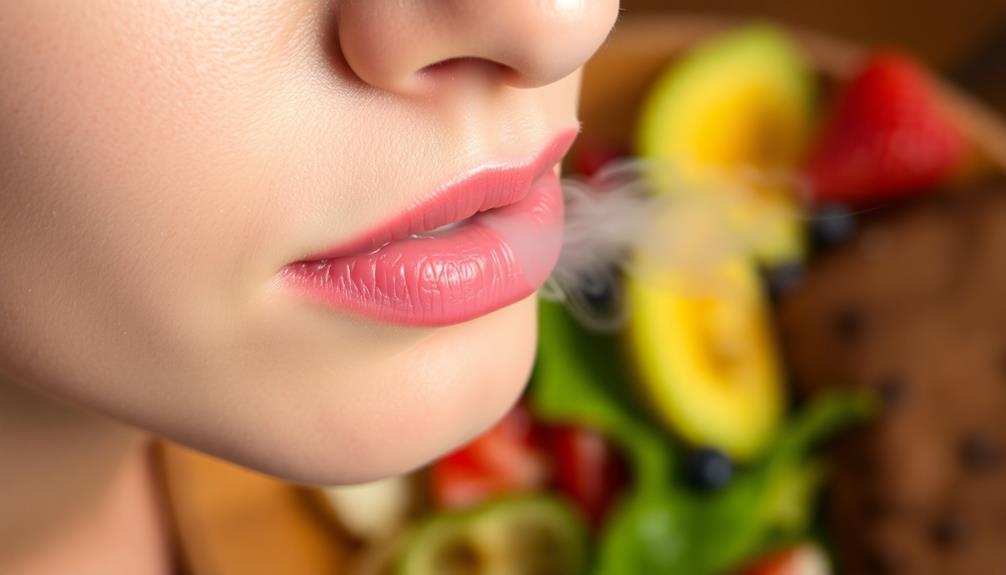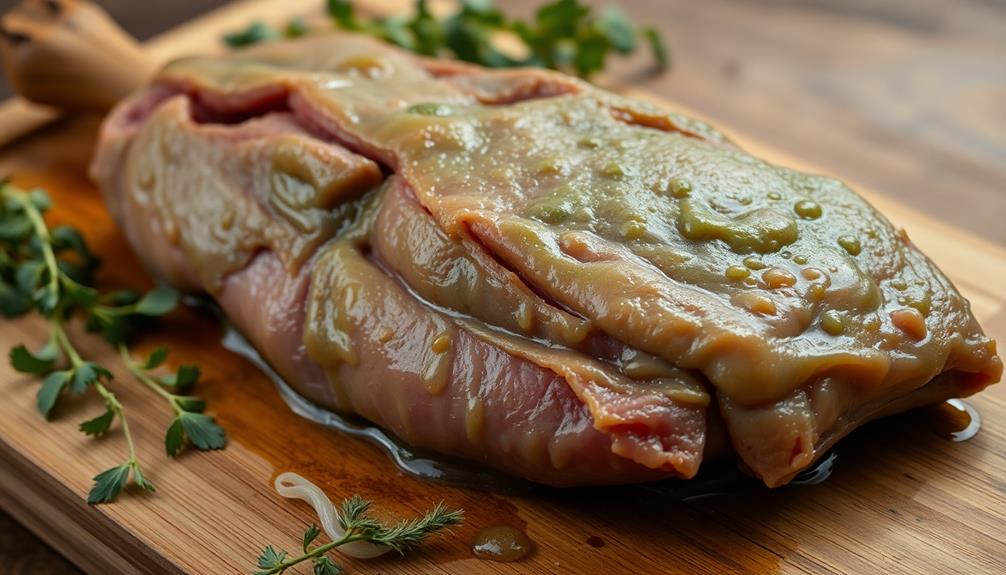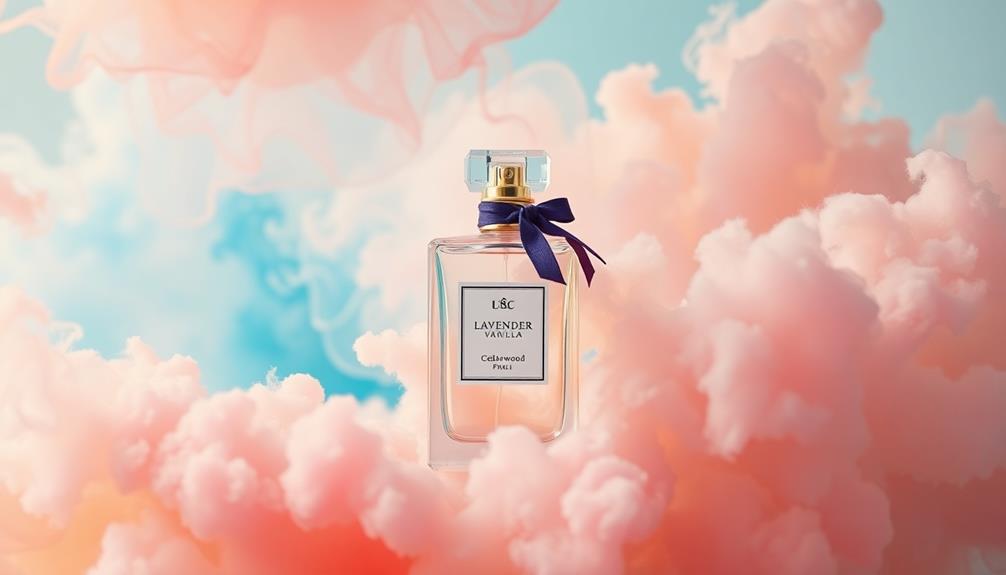Wine smells fantastic and can take you on a delightful journey! Each type has its own unique aromas; for example, red wines often smell fruity, while whites can be zesty. You might catch floral notes, like honeysuckle, or spicy hints from aging. Swirling the wine helps release these lovely scents, making them easier to appreciate. The smell can even tell you if a wine is spoiled. So next time you sniff a glass, remember—it's not just a smell; it's a story about the grapes and where they came from. Stick around, and you'll uncover even more about this rich world!
Key Takeaways
- Wine aromas vary greatly, with red wines often exhibiting fruity scents and whites showcasing zesty notes.
- Floral aromas, such as honeysuckle and jasmine, add complexity to the wine's bouquet.
- Aging introduces earthy and spicy notes, often derived from barrel interactions.
- Unique scents, like gasoline in aged Riesling, reflect the wine's terroir and regional characteristics.
- Aroma can indicate potential faults; unpleasant smells may suggest spoilage or poor quality.
Introduction
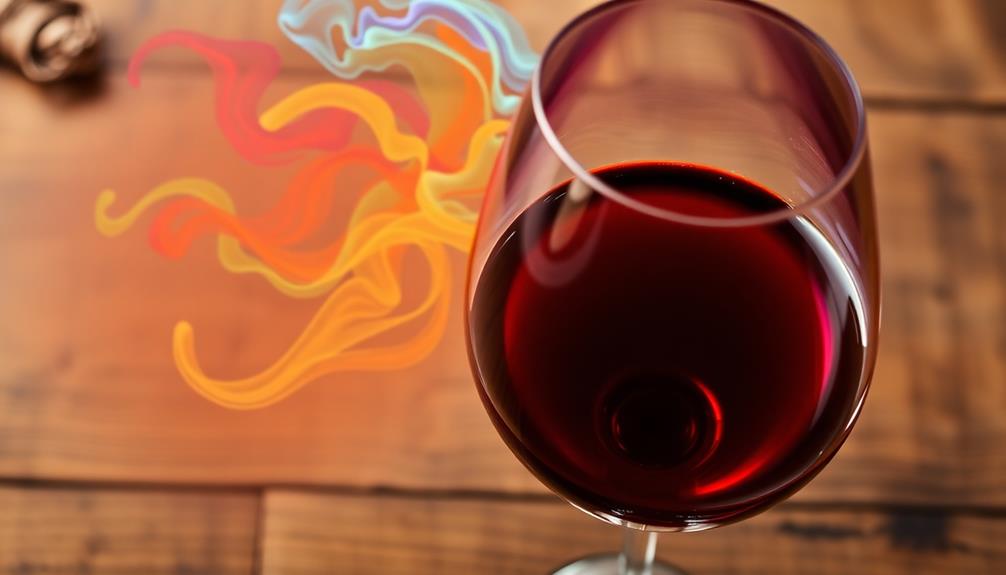
When you pour a glass of wine, the first thing that greets you is its aroma, setting the stage for the tasting experience ahead. The smell of wine is a wonderful blend of scents that can tell you a lot about it. These aromas come from three main sources: primary aromas from the grape variety and where it's grown, secondary aromas from the winemaking process, and tertiary aromas that develop as the wine ages.
When you take a whiff, you might notice fruity notes like berries or citrus, floral scents like jasmine, or earthy aromas like mushrooms. Interestingly, just like coffee, which is known for its health benefits, the aromas in wine can also influence your overall experience, enhancing your enjoyment and appreciation of the drink.
Swirling the wine in your glass helps release these aromas, making them easier to smell. It's important to engage your sense of smell before tasting because a whopping 90% of what you taste is influenced by what you smell!
Plus, some aromas can signal problems; for instance, a corked wine might smell musty. So, as you prepare for your wine tasting adventure, take a moment to enjoy the rich tapestry of aromas before sipping. Embrace the experience, and let your nose guide you towards understanding the wine's character!
Description of the Smell
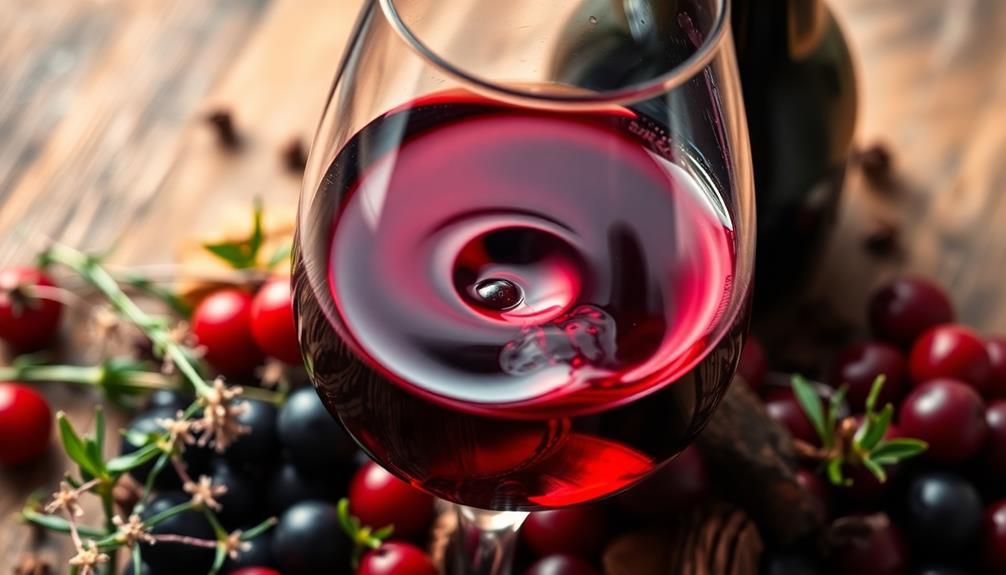
The smell of wine is a captivating experience that can transport you to the vineyard with just a single whiff. When you take a deep breath, you'll notice different aromas dancing in the air. Each type of wine has its own personality. For instance, red wine often greets you with sweet notes of cherry, raspberry, and plum, while white wines might surprise you with zesty citrus or juicy stone fruits.
Understanding the complexities of wine can enhance your appreciation, much like IRA investing strategies can improve your financial future.
As you explore the wine bouquet, you might catch hints of floral aromas like honeysuckle or jasmine. These delightful scents add a lovely touch and complexity to the overall experience.
Don't forget about the aging process, which contributes even more. You could find earthy aromas like mushrooms or rich baking spices, thanks to the barrels used during aging.
Sometimes, you might even encounter unusual scents, like a hint of gasoline in an aged Riesling. These unique aromas tell stories about the terroir and winemaking practices behind each bottle.
Source and Composition
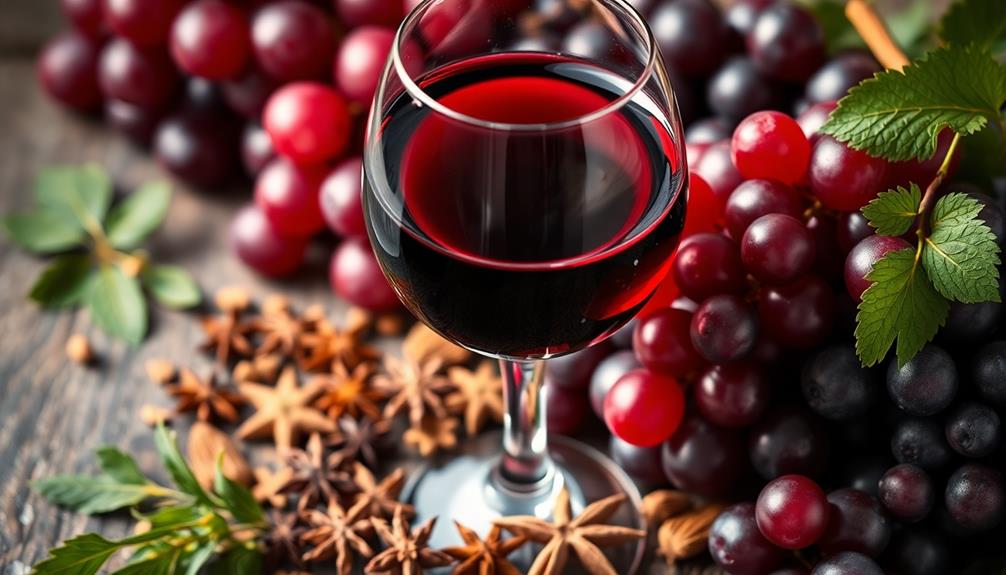
Aroma in wine stems from the grape variety used, with specific compounds influencing the overall scent profile. You might notice that different grapes have distinct characteristics—like how Cabernet Sauvignon and Sauvignon Blanc can smell grassy due to the presence of methoxypyrazine.
These smells can be categorized into three groups. Primary aromas come straight from the grape, offering fruity or floral scents, while low carb high protein breakfast ideas can provide a great way to start your day with energy. Secondary aromas arise during fermentation, bringing buttery or vanilla notes into the mix. Finally, tertiary aromas develop as the wine ages, adding layers like spices or cocoa.
The magic happens through volatile compounds, which change quickly during fermentation and evolve more slowly as the wine matures. Each wine region brings its own unique characteristics to the table, shaped by soil and climate, which also affect the wine aromas.
Plus, many aromatic compounds form from odourless glycosides that transform into aromatic forms through hydrolysis. This process contributes to the complex aromas you'll find in a glass of wine, making each sip a delightful journey.
Typical Scenarios or Environments
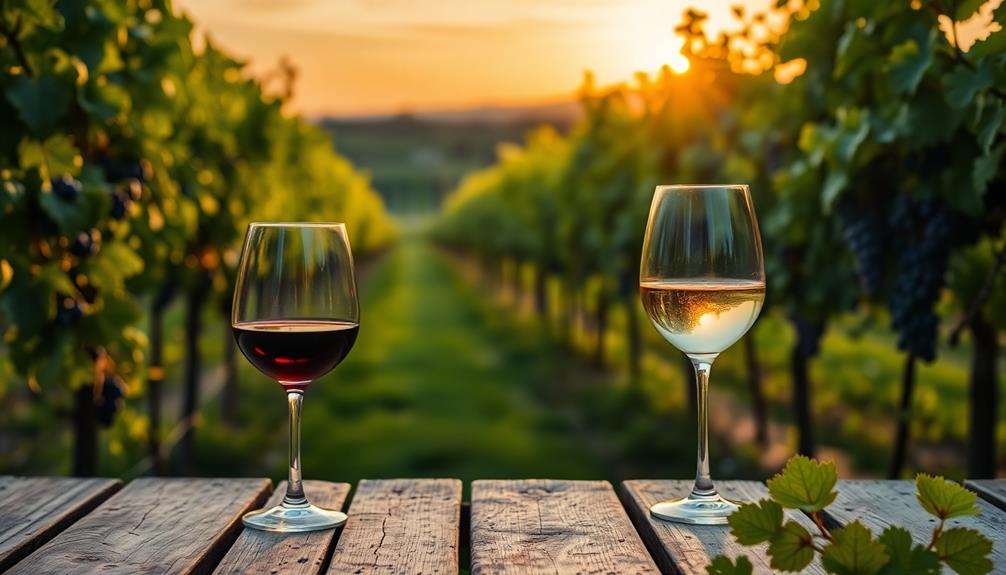
Wine's experience can greatly depend on the environment in which you're enjoying it. When you're in neutral settings, like a quiet room without strong odors, you're better able to appreciate the different aromas in your glass. This clarity helps wine drinkers focus on what they're smelling, enhancing the pleasant smell of the wine.
Tasting wine during optimal times, such as around 11 am or 6 pm, aligns with your body's natural rhythms. Your senses are more receptive, making it easier to identify those delightful aromas. Having light snacks like bread or cheese can also help cleanse your palate, allowing for a more focused evaluation.
Sharing your thoughts with friends while tasting wine can make the experience even more fun. Discussing the aromas you pick up can improve your ability to recognize and appreciate them. Engaging in these social interactions not only enriches your experience but also creates lasting memories.
Emotional or Cultural Associations

Enjoying wine isn't just about the flavors; it's also about the emotions and memories those aromas can evoke. When you take a whiff of a wine, those wonderful scents can trigger strong emotional responses. For instance, you might catch a hint of floral notes that remind you of a family celebration or fruity aromas that bring back memories of summer picnics.
Cultural associations play a big role too. Different regions celebrate unique wine aromas based on their terroir, which includes the geography, climate, and soil that shape the grapes. In some cultures, sipping wine with specific aromas marks important rituals, symbolizing hospitality or joy.
The complexity of wine aromas contributes to the storytelling behind each bottle. Each scent you detect tells a story of its origin and the care taken during production.
Health or Safety Considerations
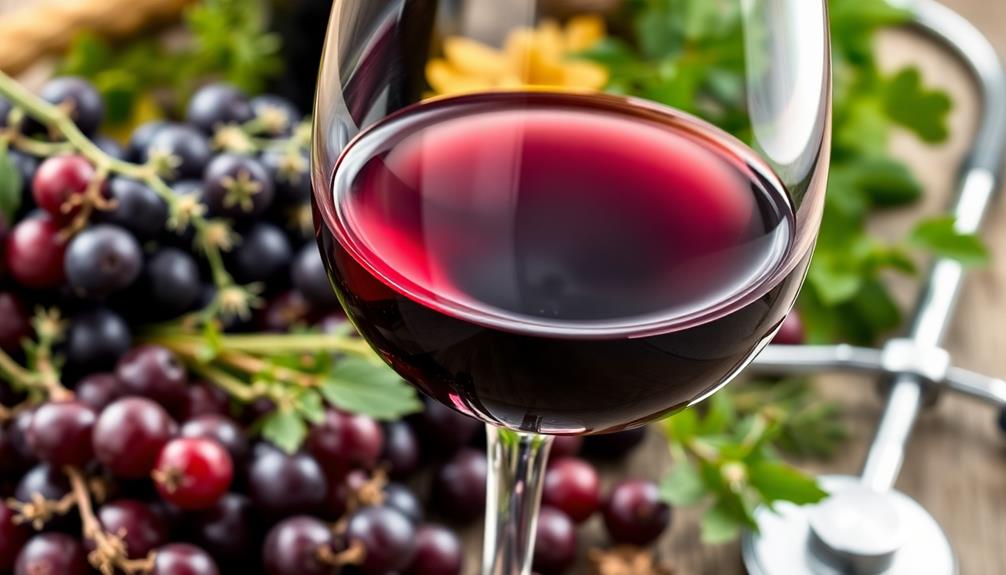
When exploring the world of wine, you should pay attention to the aromas, as they can reveal a lot about the wine's quality and safety. A pleasant wine aroma often means you've got a well-made bottle, while off-odors like mustiness or vinegar can signal possible spoilage.
If you smell something unusual, it's best to be cautious; that could mean the wine's not safe to drink.
If you have allergies or sensitivities, be aware that certain aromas, especially those from sulfites and additives, might trigger reactions. Pregnant individuals are advised to avoid alcohol altogether, as some wine aromas can mask the presence of alcohol, leading to health risks.
Proper storage is crucial, too! Keeping your wine in the right conditions can prevent oxidation and spoilage, reducing the chances of developing undesirable aromas.
Final Thoughts
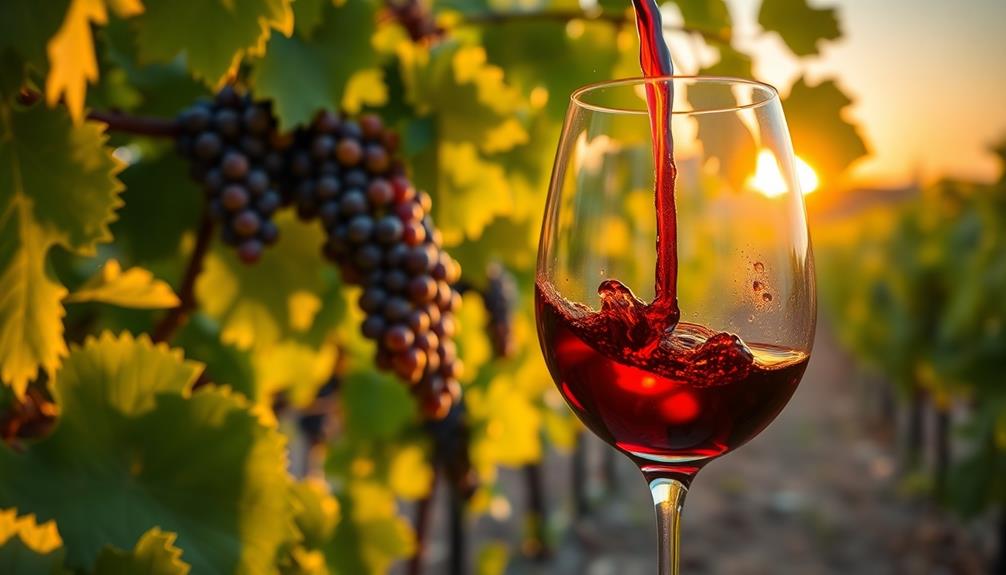
Understanding wine aromas not only enhances your tasting experience but also underscores the importance of quality and safety. When you learn about wine, you'll discover that the aromas in wine can be categorized into primary, secondary, and tertiary scents. These aromas create a delightful bouquet that makes each sip unique and enjoyable.
For instance, in white wine, you might notice bright citrus or luscious stone fruit aromas. Meanwhile, red wines often greet you with enticing smells of red fruit, like cherry and blackberry, mixed with spicy notes of pepper or cloves. This complexity adds layers of flavor, making your tasting adventure even more exciting.
However, be mindful of the smells that arise from wine faults. A corked wine might remind you of wet cardboard, while an oxidized wine can smell flat and dull. These odors can indicate poor quality, so it's essential to trust your nose.
Frequently Asked Questions
How Do You Describe the Smell of Wine?
When you describe the smell of wine, focus on its primary, secondary, and tertiary aromas. Swirl the glass, inhale deeply, and identify notes like fruits, spices, or earthy undertones to enhance your tasting experience.
What Is the Aroma of the Wine?
When you explore a wine's aroma, you'll discover a complex blend of fruity, floral, and earthy scents. Each sip reveals different notes, influenced by grape variety, fermentation, and aging, creating a unique aromatic experience.
Does Drinking Wine Smell?
Drinking wine doesn't produce a smell itself; instead, you experience its aromas before tasting. Swirling the wine helps release those scents, allowing you to fully enjoy the complex bouquet that enhances your tasting experience.
What Are the Odors of Wine?
When exploring wine, you'll encounter a range of odors, from fruity and floral to earthy and spicy. Each bottle tells a story through its unique aromas, inviting you to savor and appreciate its complexities.

